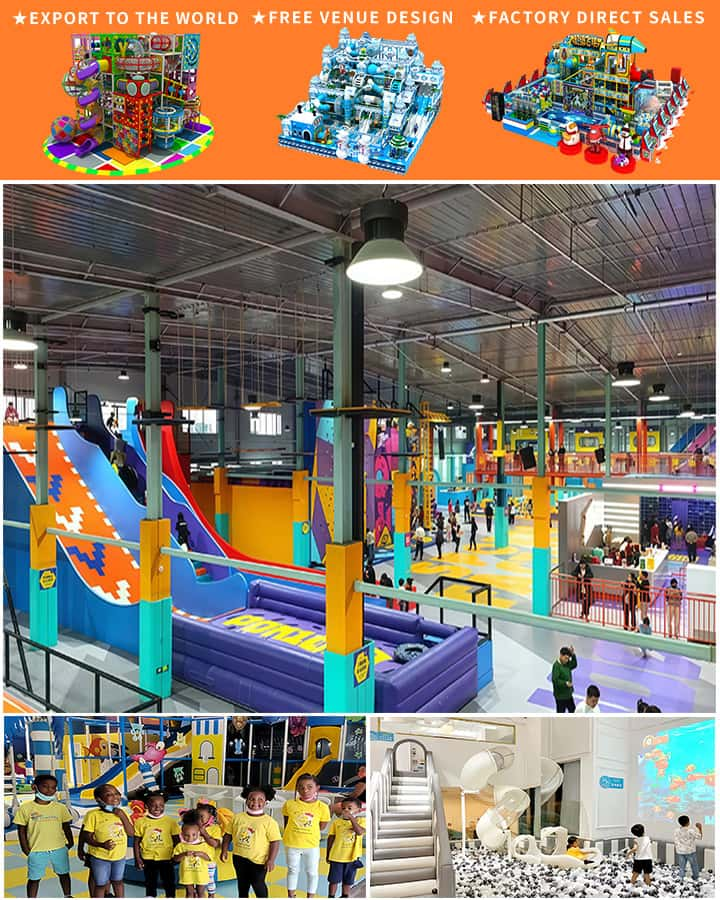Preschool playground structures play a crucial role in the early development and well-being of young children. These carefully designed pieces of equipment are not just fun to use; they also provide numerous physical, cognitive, and social benefits that contribute significantly to a child’s growth. In this article, we will explore the various types of preschool playground structures and their importance in fostering a safe and enriching environment for young learners.
Types of Preschool Playground Structures
Climbing Structures
Climbing structures, such as jungle gyms and climbing walls, help develop motor skills and coordination. These structures encourage children to engage in physical activity, which is essential for their health and fitness. By navigating through ladders, ropes, and bars, children enhance their balance, strength, and agility.
Slides
Slides are a classic feature of any playground and remain immensely popular with preschoolers. Sliding helps improve children’s spatial awareness and sense of direction. The act of climbing up and then sliding down provides a full-body workout and helps build muscle strength and endurance.
Swings
Swings are another essential part of preschool playgrounds. They offer a different kind of movement experience that promotes vestibular (inner ear) function development, which is critical for maintaining balance. Swinging also strengthens the muscles in the back, shoulders, and legs.

Sandbox Areas
Sandboxes encourage imaginative play and creativity. Playing with sand allows children to explore sensory experiences, improving tactile perception and fine motor skills. Building castles or digging for “treasure” in a sandbox can also be a great way for children to cooperate and interact with their peers.
Educational Structures
Some playground structures are designed specifically for educational purposes. Features like interactive panels with letters, numbers, or shapes help reinforce learning concepts in a fun, hands-on manner. These educational elements can complement classroom activities and make learning more engaging.
Benefits of Preschool Playground Structures
Physical Development
The various components of playground structures challenge children’s physical abilities and promote overall development. Activities such as climbing, swinging, and balancing enhance gross motor skills, which are vital for everyday tasks like walking, running, and even handwriting.
Cognitive Development
Playground structures stimulate cognitive development by encouraging problem-solving and creative thinking. Children often figure out how to navigate structures, which involves planning, decision-making, and spatial awareness. Educational structures further support cognitive growth by incorporating learning into play.
Social Development
Preschool playgrounds provide an excellent opportunity for children to socialize and develop essential interpersonal skills. Sharing equipment, taking turns, and collaborating on games help kids learn about cooperation, empathy, and conflict resolution. These social interactions are foundational for building healthy relationships later in life.
Emotional Well-Being
Engaging in physical activity releases endorphins, which are chemicals that promote feelings of happiness and well-being. Spending time on playground structures helps reduce stress and anxiety, contributing to emotional stability. Moreover, achieving the milestone of conquering a piece of challenging playground equipment can boost a child’s self-esteem and confidence.
Safety Considerations
Safety is paramount when it comes to preschool playground structures. It is essential to ensure that all equipment is age-appropriate, well-maintained, and constructed from non-toxic materials. Proper supervision by trained adults is also crucial to prevent accidents and ensure that children use the playground correctly and safely.
Conclusion
Preschool playground structures are more than just sources of entertainment; they are vital tools for promoting physical, cognitive, social, and emotional development in young children. By providing a variety of structures that cater to different needs and abilities, preschools can create a stimulating and supportive environment where children can grow and learn. Investing in high-quality playground equipment is an investment in the future well-being and success of our youngest learners.




